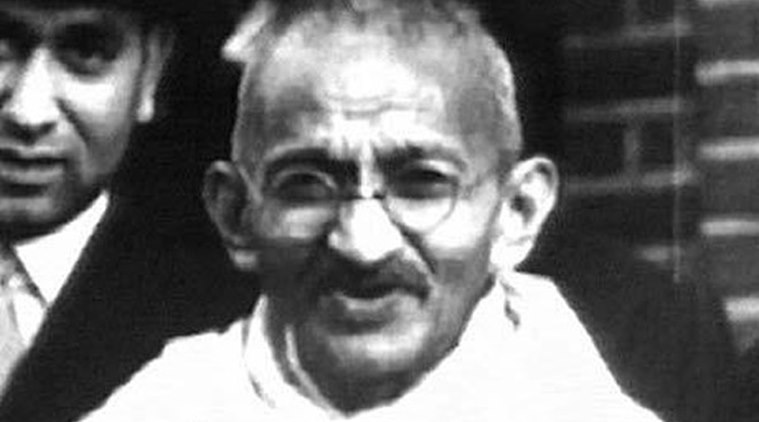- India
- International
Celebrating Champaran 1917
The satyagraha was a crucial starting point — the yoking of peasant unrest to the national movement
 Mahatma Gandhi’s handling of the Champaran struggle proved to be a model of serious leadership. (File Photo)
Mahatma Gandhi’s handling of the Champaran struggle proved to be a model of serious leadership. (File Photo)
At a moment when the ideals and events of our national movement seem to be fading from public memory, it is gratifying that there should be a celebration in this country of the centenary of one of the most remarkable episodes of modern Indian history, the Champaran Satyagraha of 1917, that opened a new phase in the national movement by joining it to the great struggle of the Indian peasantry for bread and land. Ever since Plassey (1757), British rule meant a constant exploitation of India, the main burden of which had fallen on its peasants, artisans and the labouring poor. It has been the great intellectual achievement of the early nationalists that they were able to show how the twin processes of the drain of wealth and de-industrialisation had ruined India…
The impoverishment of India which the early nationalists so ably exposed was largely accomplished through means in which Englishmen themselves hardly ever appeared as the exploiters: The land revenue was exacted through zamindars or native officials; English goods, destroying Indian crafts, were sold by Indian shopkeepers and hawkers. It was mainly in plantations and mines that the Englishman appeared directly as the oppressor. Among plantations, it was the indigo plantations where such oppression had the longest history.
Indigo was a celebrated product of India, down the centuries, raised and processed locally by peasants. But in the 17th century, European-owned slave plantations in the West Indies also began to produce it, the extraction process they used being improved immensely by the use of boilers. When the English conquered Bengal, European indigo planters appeared soon enough. Obtaining zamindaris, they coerced peasants into raising indigo, for the dye to be processed out of the plants in their “factories”. The coercion exercised by European planters on peasants to raise indigo and sell it cheaply to them — under methods portrayed in Bandhu Mitra’s famous Neel Darpan (1860) — led to peasant “disturbances” in Nadia in Bengal in 1859 and 1860. But these were suppressed by the administration.
Indigo plantations extended into Bihar where European planters used the zamindari system to force their peasant tenants to bow to their will. Where they could not buy zamindaris, they obtained leases from local zamindars, and in the form of “thekadars”, exercised the same rights over peasants. In Champaran district of Bihar, most European planters obtained thekas or leases for whole villages from the large Bettiah zamindari. Here, as the demand for indigo grew with expanding textile imports, the planters imposed what came to be known as the tinkathia system, peasants being forced to raise indigo on the best parts of their rented lands.
A crisis occurred when a synthetic dye was developed in Germany in the late 1880s. Since natural indigo dye could not compete, indigo exports from India declined in value from Rs 4.75 crore in 1894-95 to Rs 2.96 crore five years later. As indigo prices and the planters’ profits fell, the planters began correspondingly to increase the rent-burden on the peasants, invoking their rights as zamindars… Alongside these exactions, the planters made full use of the traditional zamindari practice of begar, forced unpaid or ill-paid labour, requisitioning at will the peasant’s cattle, plough and carts, or compelling them to provide labour for their plantations. In other words, the planters tried to throw the entire burden of the crisis caused by competition from synthetic indigo onto the shoulders of the peasants, while safeguarding or even increasing their own profits…

Gandhi’s handling of the Champaran struggle proved to be a model of serious leadership. He was stepping into an area where the peasants had been kept suppressed for so long that no “satyagraha” of the form he had led in South Africa could be organised. He therefore announced that he had come only to study conditions and collect information, for which he was able to gather a group of intrepid men, including his principal assistant here, Brajkishore Prasad and the future principal Congress leaders of Bihar, Rajendra Prasad and Acharya Kripalani. He and his group began to move among peasants and record their grievances. This was the form and substance of the Champaran Satyagraha…
Finally, the government capitulated. No less a person than E.A. Gait, the Lt. Governor of Bihar and Orissa, along with the Chief Secretary, H. McPherson, held a long meeting with Gandhiji on June 5 at Ranchi. Here, a settlement was worked out. A committee of enquiry, with such broad terms of reference as to cover all the matters that were relevant to peasants’ grievances, was to be instituted, the committee was to include Gandhiji as member along with a representative of planters and another of zamindars, and three British officials, including the president of the committee. All the evidence that Gandhiji had collected could be placed before it. It was assumed its recommendations would be honoured by the government. In return, Gandhiji agreed to terminate his campaign of collecting peasant grievances.
The mass movement at Champaran, revolving around the recording of grievances, was over. But the actual work of alleviating the grievances had now to be taken up. Again, it is a sign of Gandhiji’s mature leadership that he took up work on this committee with the greatest care and earnestness. He attended all its meetings, presented full evidence before it and was alert in assessing promptly all the proposals that were put before it…
The major recommendations of the committee required certain changes to be embodied in law and so, the government ordered a law to be prepared in the very month of October 1917, this taking the form of the Champaran Agrarian Act, 1918. It is characteristic of Gandhiji that he also scrutinised the draft bill and suggested changes in its text to protect tenants’ interests. Characteristically, he spent little time in celebrating the huge success he had achieved for the peasants and the poor of Champaran.
EXPRESS OPINION
More Explained
Apr 23: Latest News
- 01
- 02
- 03
- 04
- 05









































